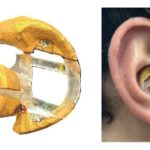Summary: Netradyne has introduced a third-generation AI-driven driver monitoring system that detects early-stage drowsiness in drivers and provides real-time alerts to reduce collision risks. The system uses sensors to monitor micro-behaviors, such as eye closure patterns, and integrates outward-facing cameras to assess road behaviors like lane departures, offering a comprehensive approach to drowsy driving prevention. The solution launches in the US as an add-on to Netradyne’s Driver•i system, just in time for Drowsy Driving Prevention Week.
Key Takeaways:
- Advanced Drowsiness Detection: The system identifies early signs of drowsiness by monitoring subtle driver behaviors like microsleeps and eye closure, offering proactive alerts before severe drowsiness sets in.
- Enhanced Road Monitoring: Integrated outward-facing cameras add context to driver monitoring by assessing road behaviors, such as lane departures, that may indicate drowsy driving.
- Focus on Driver Safety: This comprehensive monitoring solution is designed to reduce the risk of collisions and improve road safety, especially for professional drivers, with real-time, actionable insights for fleet managers.
Netradyne, an SaaS provider of artificial intelligence and edge computing, is introducing its driver drowsiness with driver monitoring system sensor to detect and address drowsy driving.
Building on years of sleep research and a vast dataset, Netradyne’s third-generation drowsiness detection technology can now identify early-stage drowsiness. Unlike existing solutions that only detect severe or acute drowsiness, the company’s technology enables proactive intervention, significantly reducing the risk of collisions.
This innovation comes just ahead of the national Drowsy Driving Prevention Week, Nov 3-9.
A lack of sleep can cause microsleeps, usually lasting four to five seconds. According to the National Highway Traffic Safety Administration, vehicles running 55 miles per hour can travel 100 yards before drivers wake from their microsleep. The impact of this issue is grave, with data from the Governors Highway Safety Association indicating that 10-20% of severe collisions are due to driver drowsiness.
Legacy drowsy detection systems have attempted to address this silent killer with a narrow view of drowsiness and decreased performance when it counts, in low light at night.
Detecting Drowsiness
The sensor works to detect both early and late stages of drowsiness as defined in research in academic literature. This allows us to provide early warning to drivers and predict future acute drowsiness. The sensor is sensitive to work under low light at night and can detect drowsiness even if the driver is wearing sunglasses.
This solution enables timely and precise alerts by accurately detecting subtle micro-behaviors indicative of drowsiness like microsleeps (eye closures), blink measurements, and percentage of eye closure over time that can objectively detect the onset of drowsiness. Additionally, its ability to discern varying levels of drowsiness allows for more tailored and urgent responses.
Optimized installation placement and integration with the Driver•i system, complete with multi-camera views, contribute to a comprehensive and reliable driver monitoring solution.
“Despite 95% of Americans recognizing the danger of drowsy driving, a majority still engage in this risky behavior, according to National Sleep Foundation data. The risk is compounded for those whose livelihoods depend on driving,” says Adam Kahn, president at Netradyne, in a release. “We put drivers first, so we had to get this right by developing a precise sensor to avoid false alerts without compromising drivers’ road safety. Unlike other offerings on the market that come with subjectivity, Netradyne’s [driver monitoring system] sensor is grounded in science that’s objective and measurable. Our comprehensive solution will give drivers and safety managers peace of mind that drowsy driving incidents will be prevented.”
Further Assessment of Road Behaviors
In addition to in-cab views, the solutions utilize outward-facing cameras to assess road behaviors like lane departure that may contribute to detecting drowsiness, providing a holistic view and situational context.
Using the data gathered, managers can better understand drowsy driving behavior patterns, helping inform and focus coaching sessions and develop adjusted schedules based on data, alleviating the potential for risky situations.
Progressive drowsy detection empowers managers to intervene. Advanced drowsy driving detection offers early warnings to drivers, enabling them to take immediate steps to prevent accidents and promote road safety.
This driver drowsiness with driver monitoring system sensor solution is available in the US on a limited basis, as an add-on with Netradyne’s D-450.
ID 295564347 © Serhii Hryshchyshen | Dreamstime.com




Leave a Reply